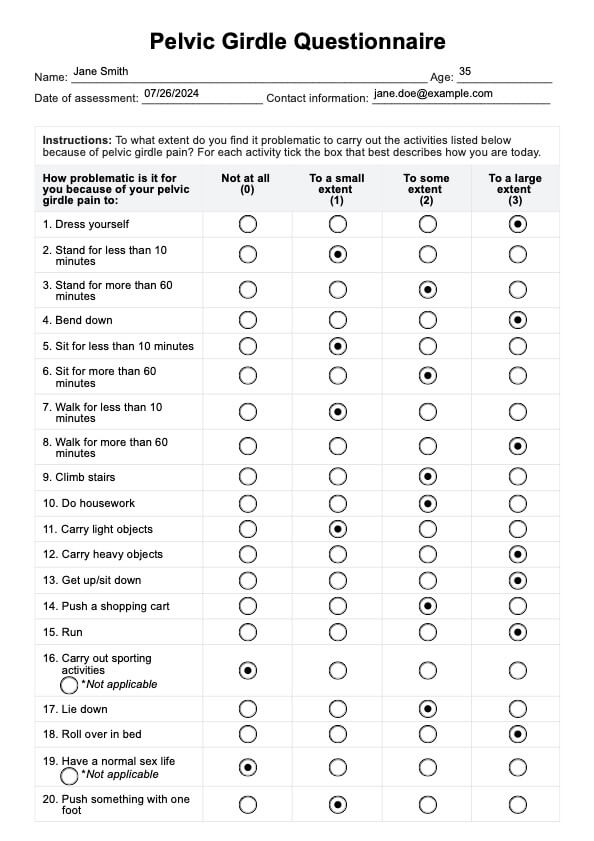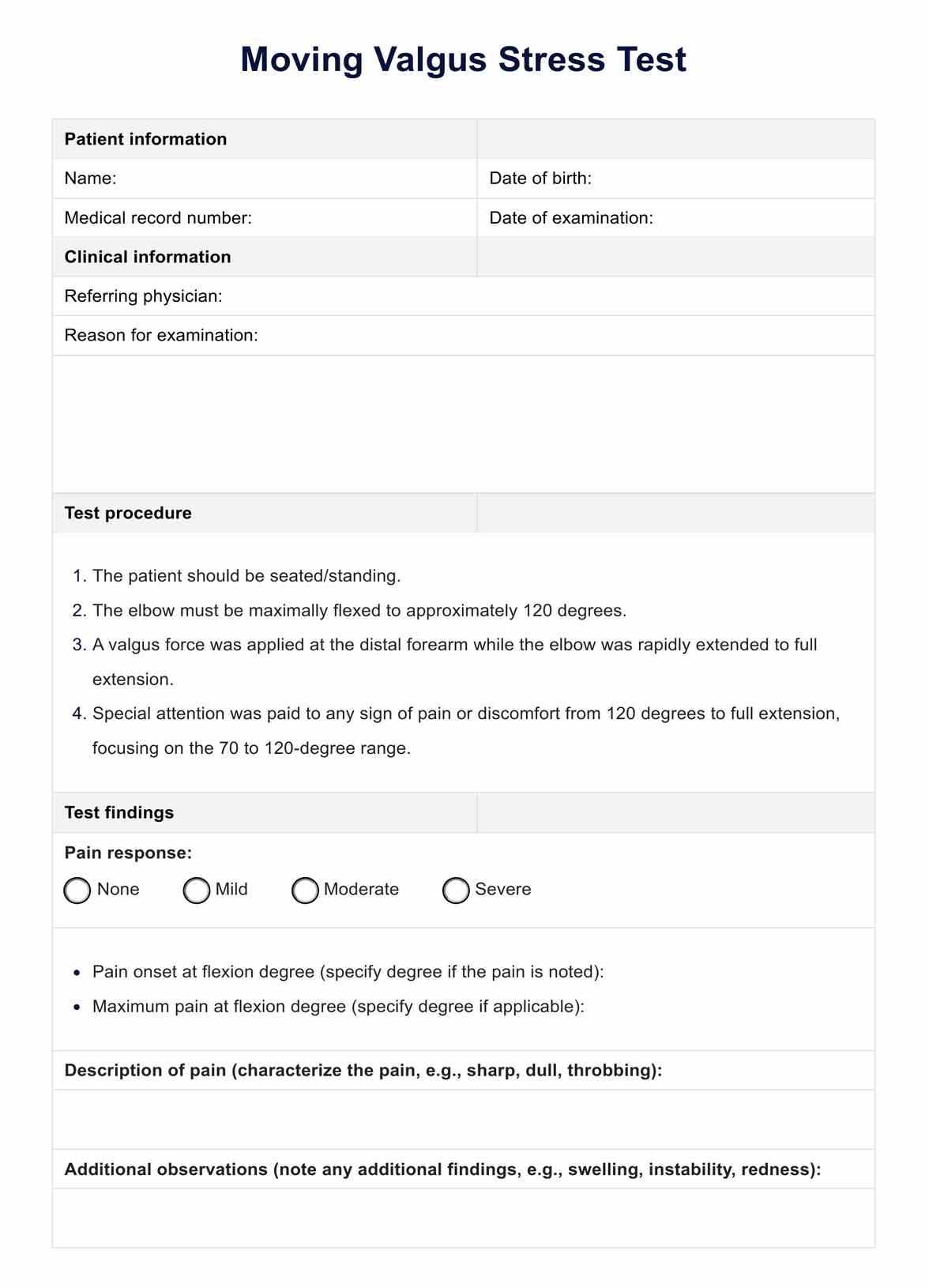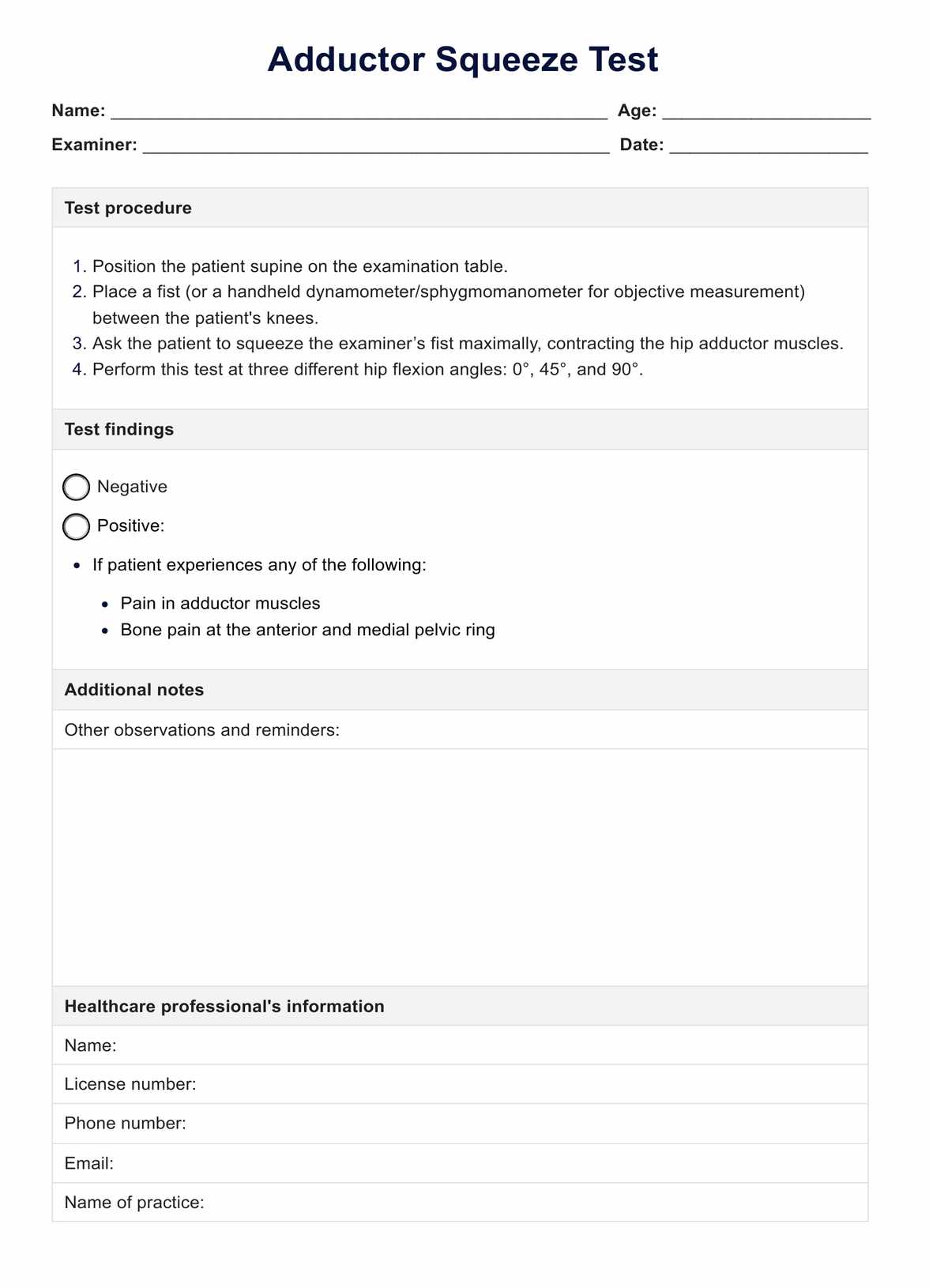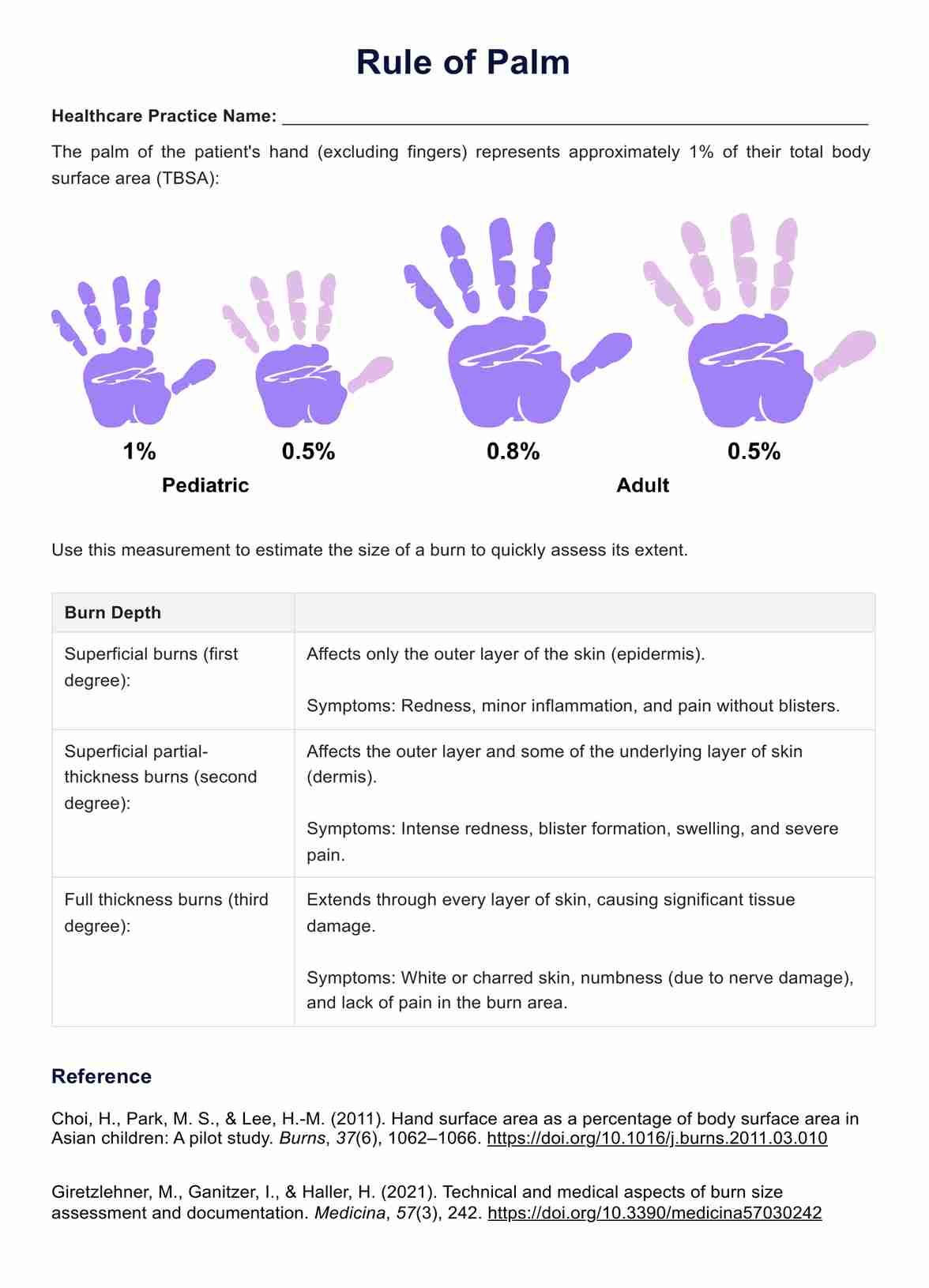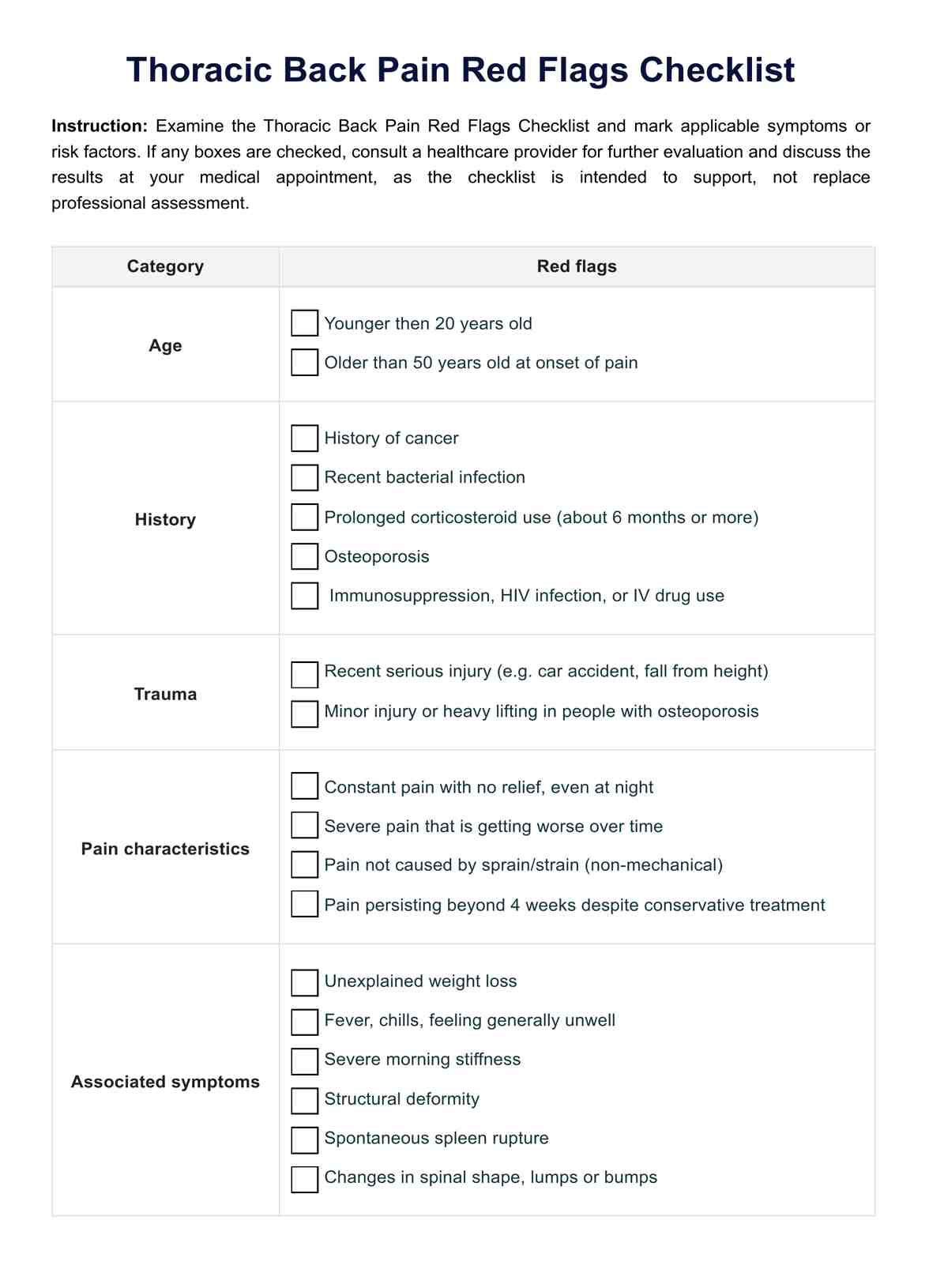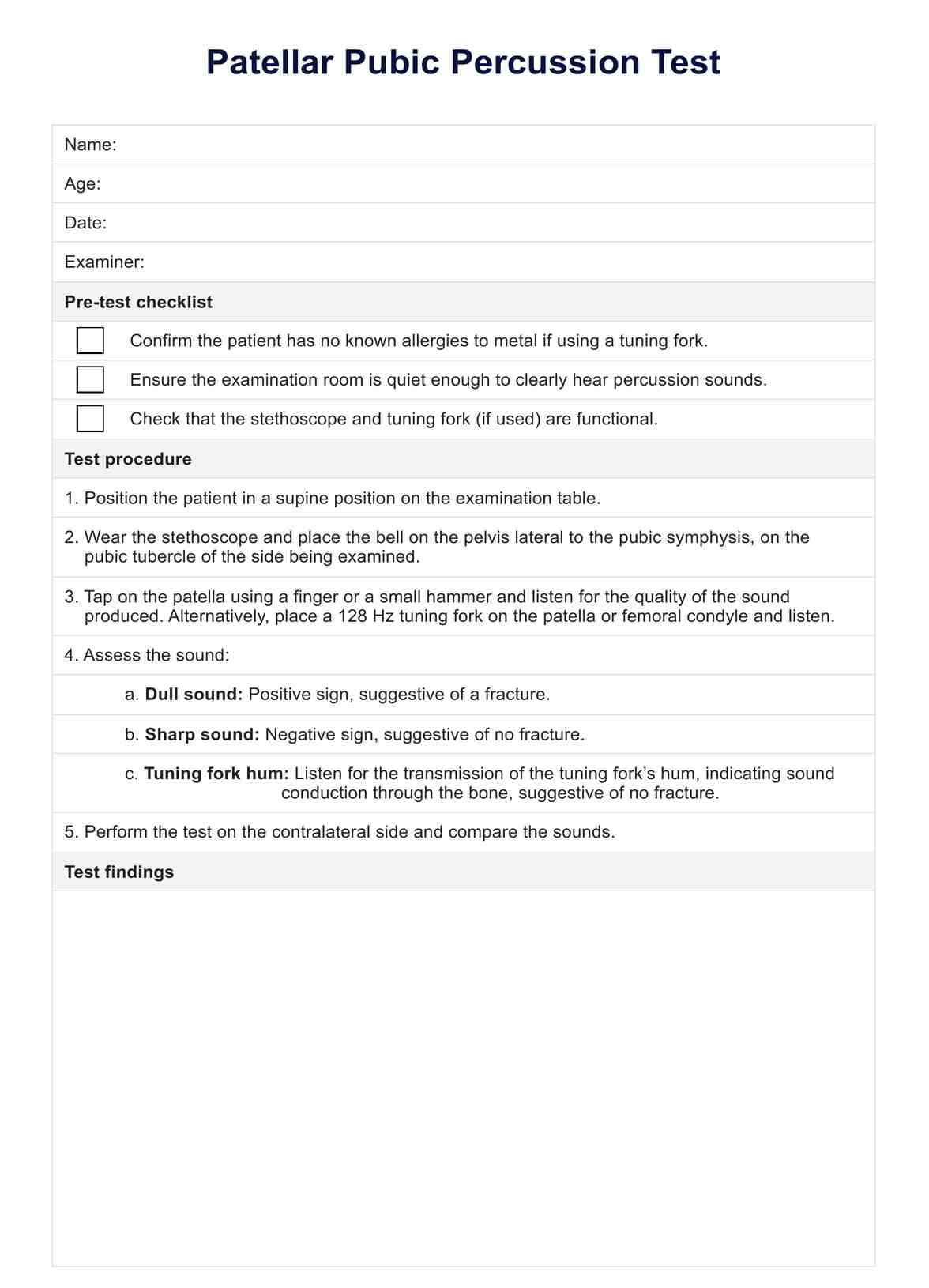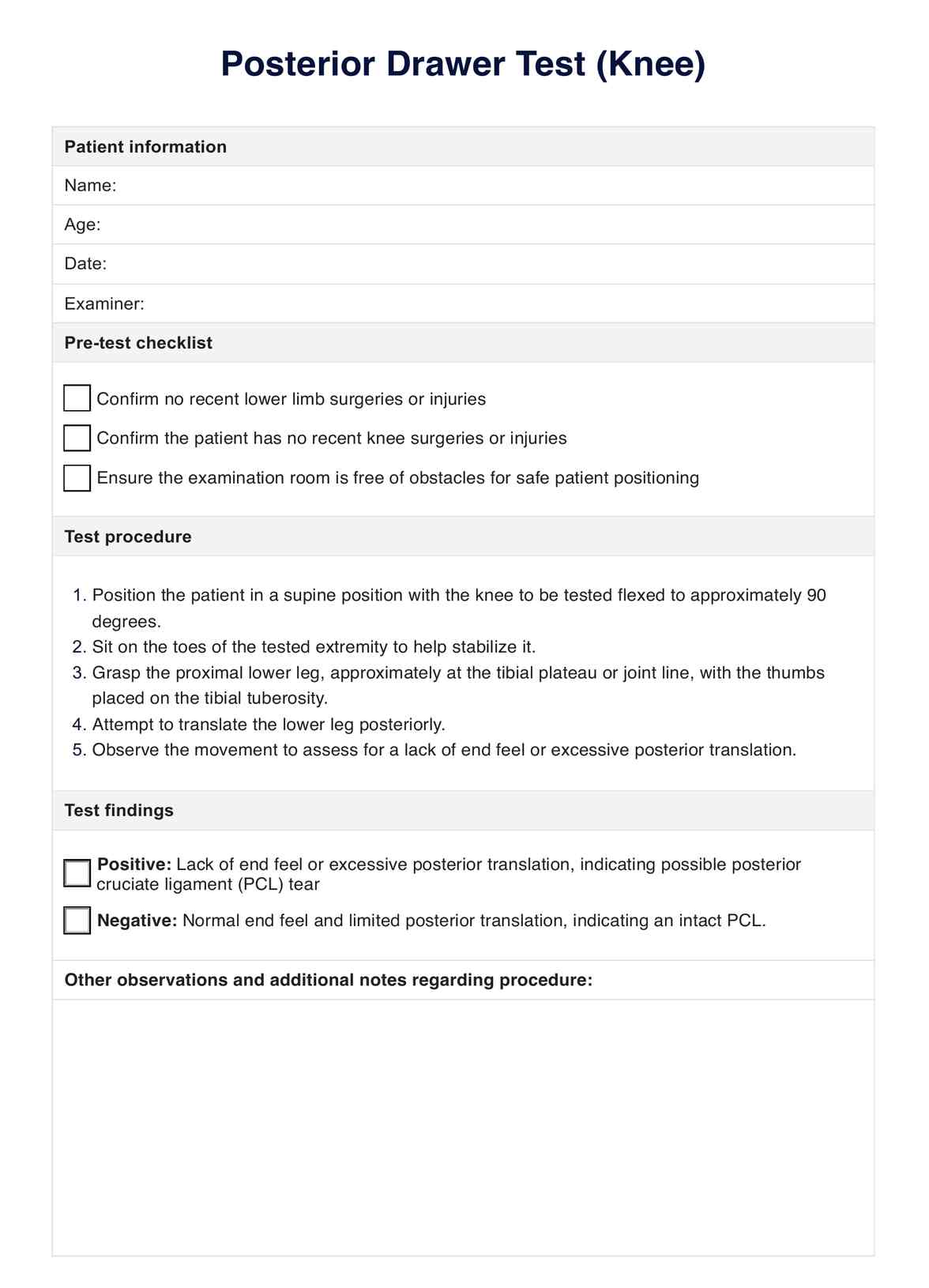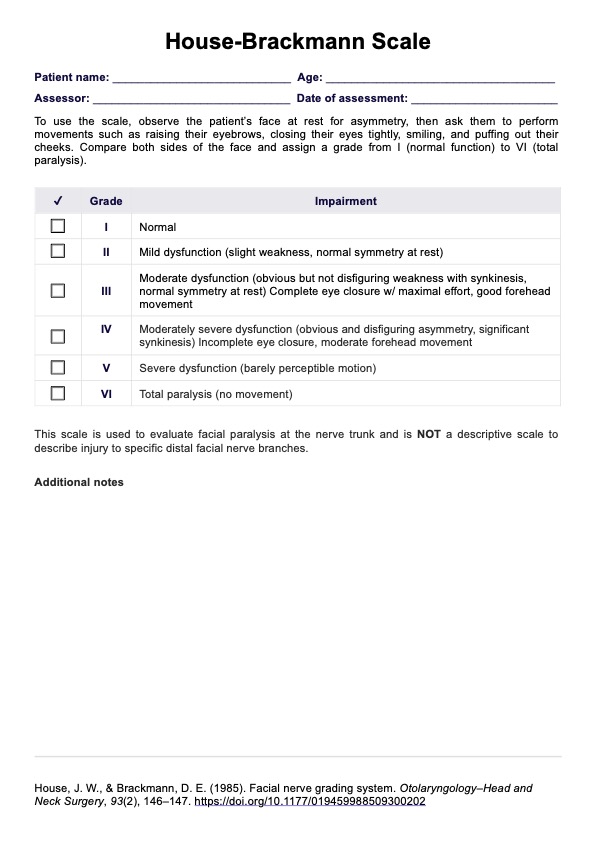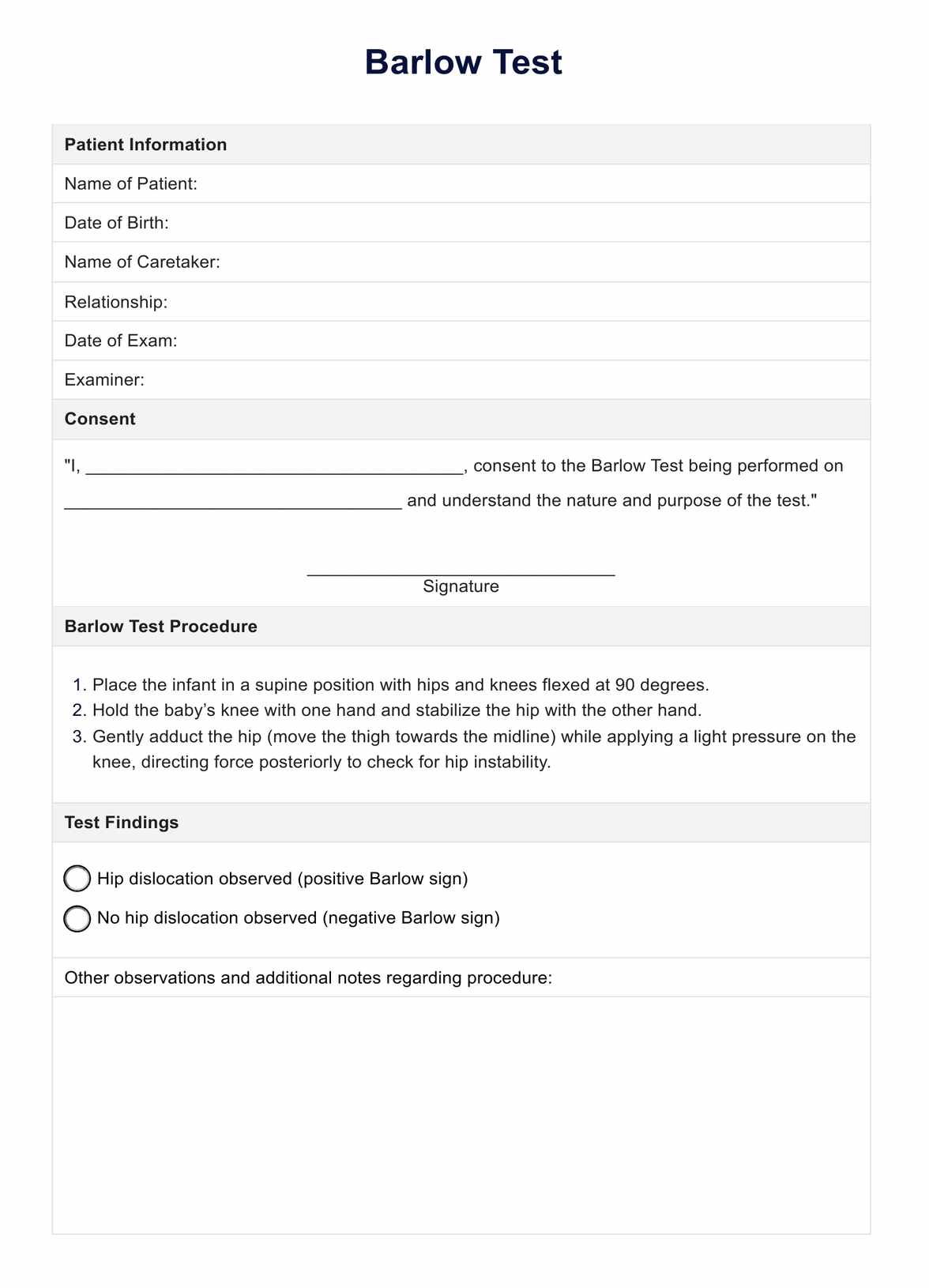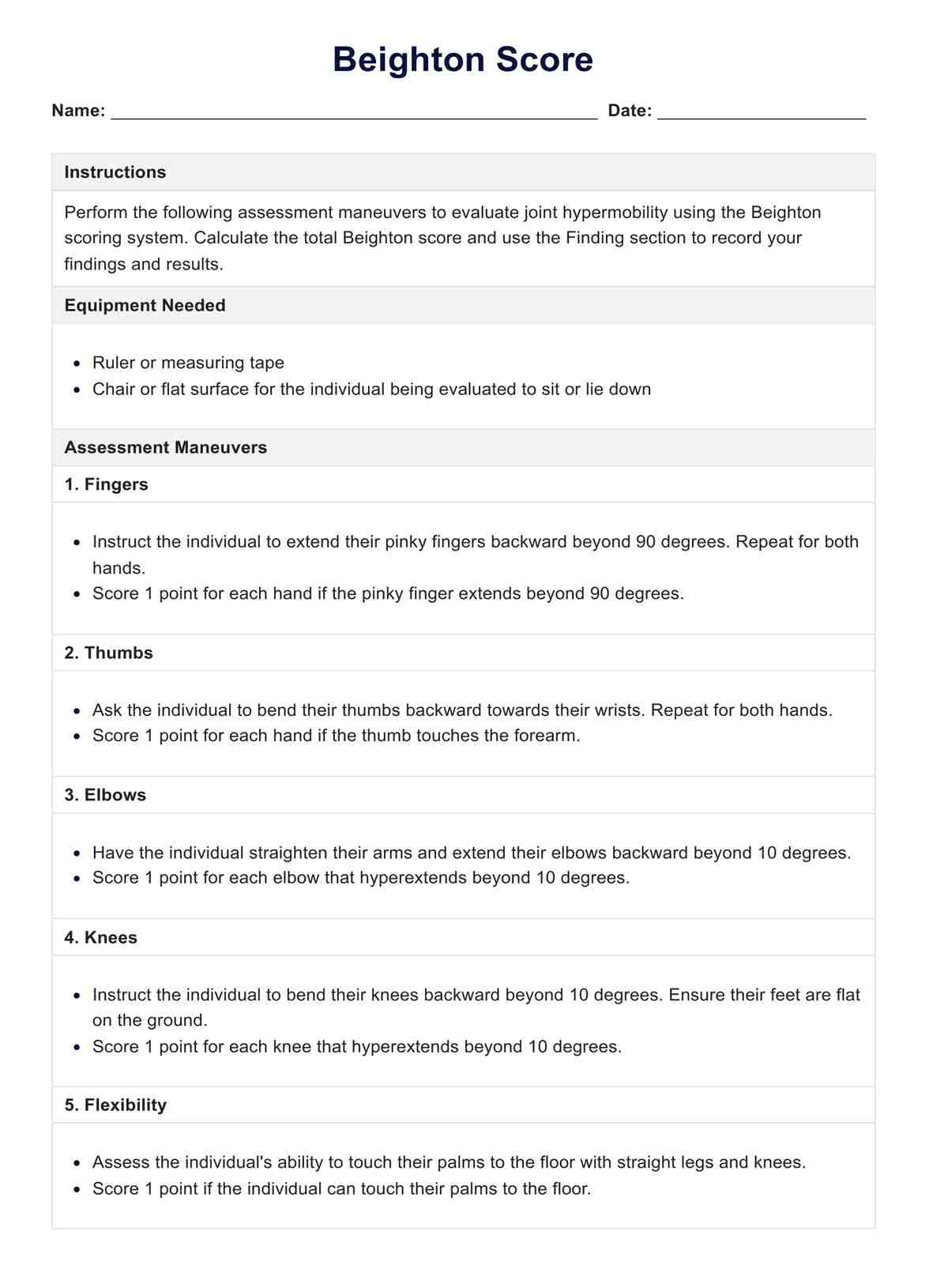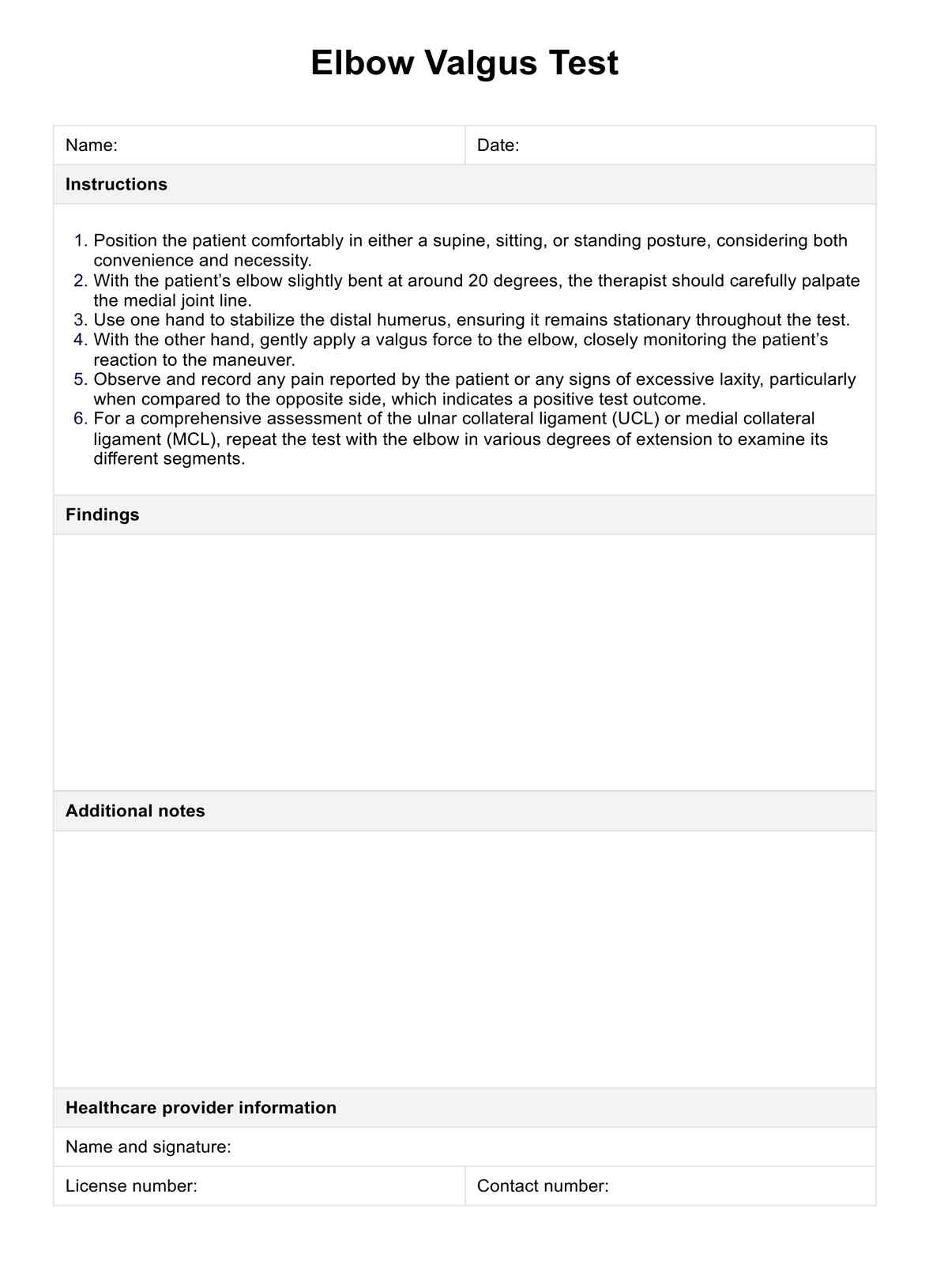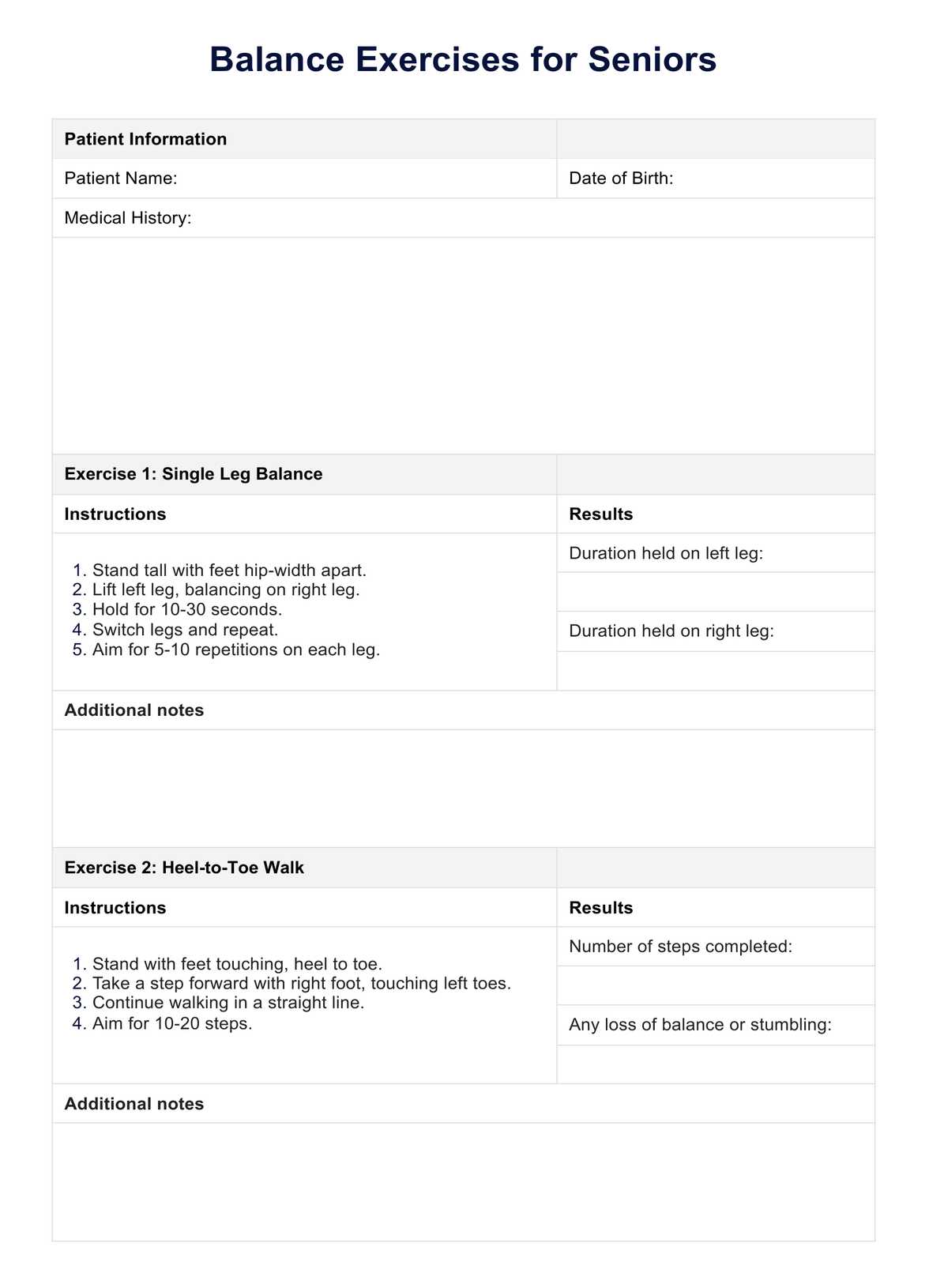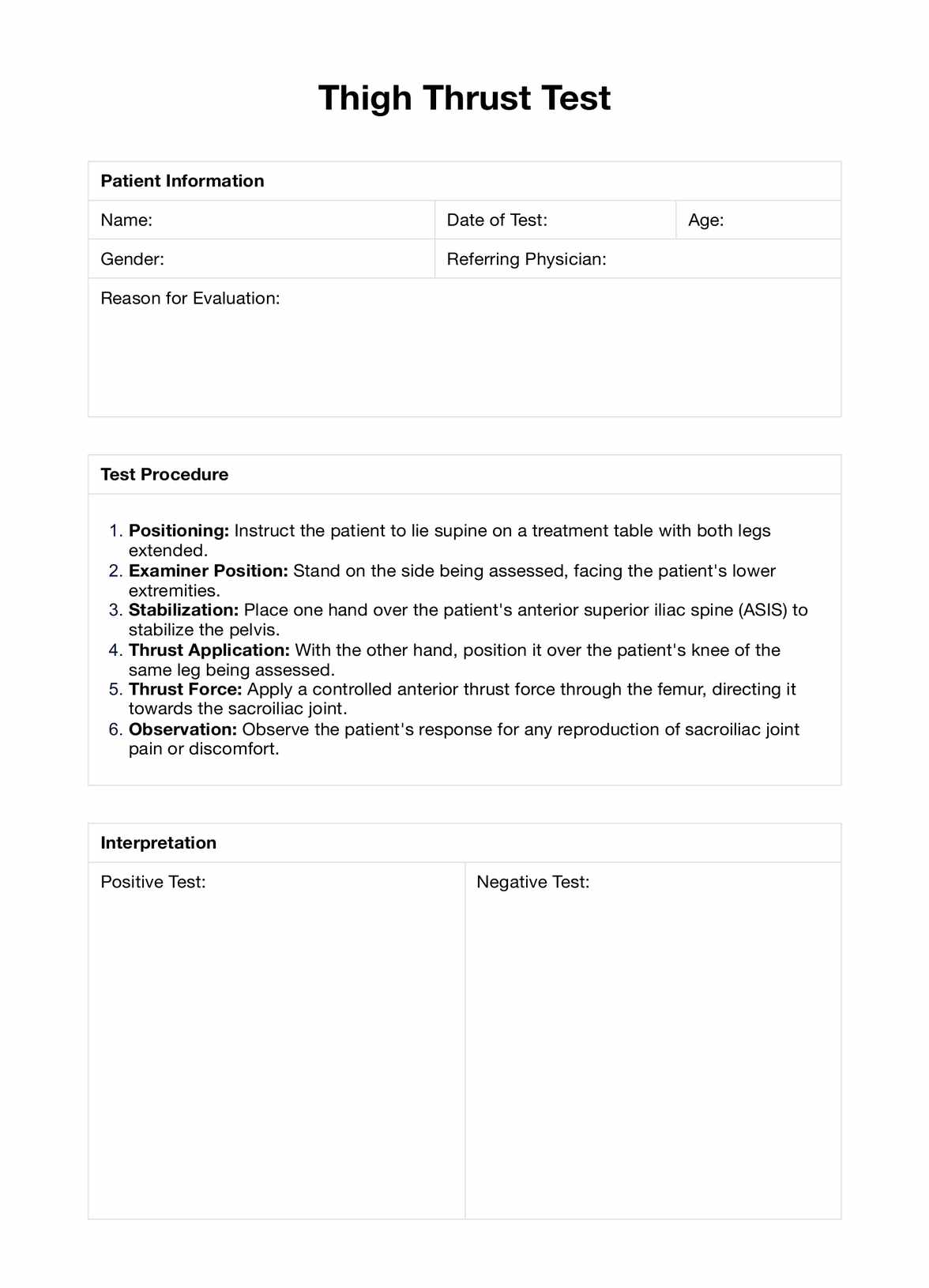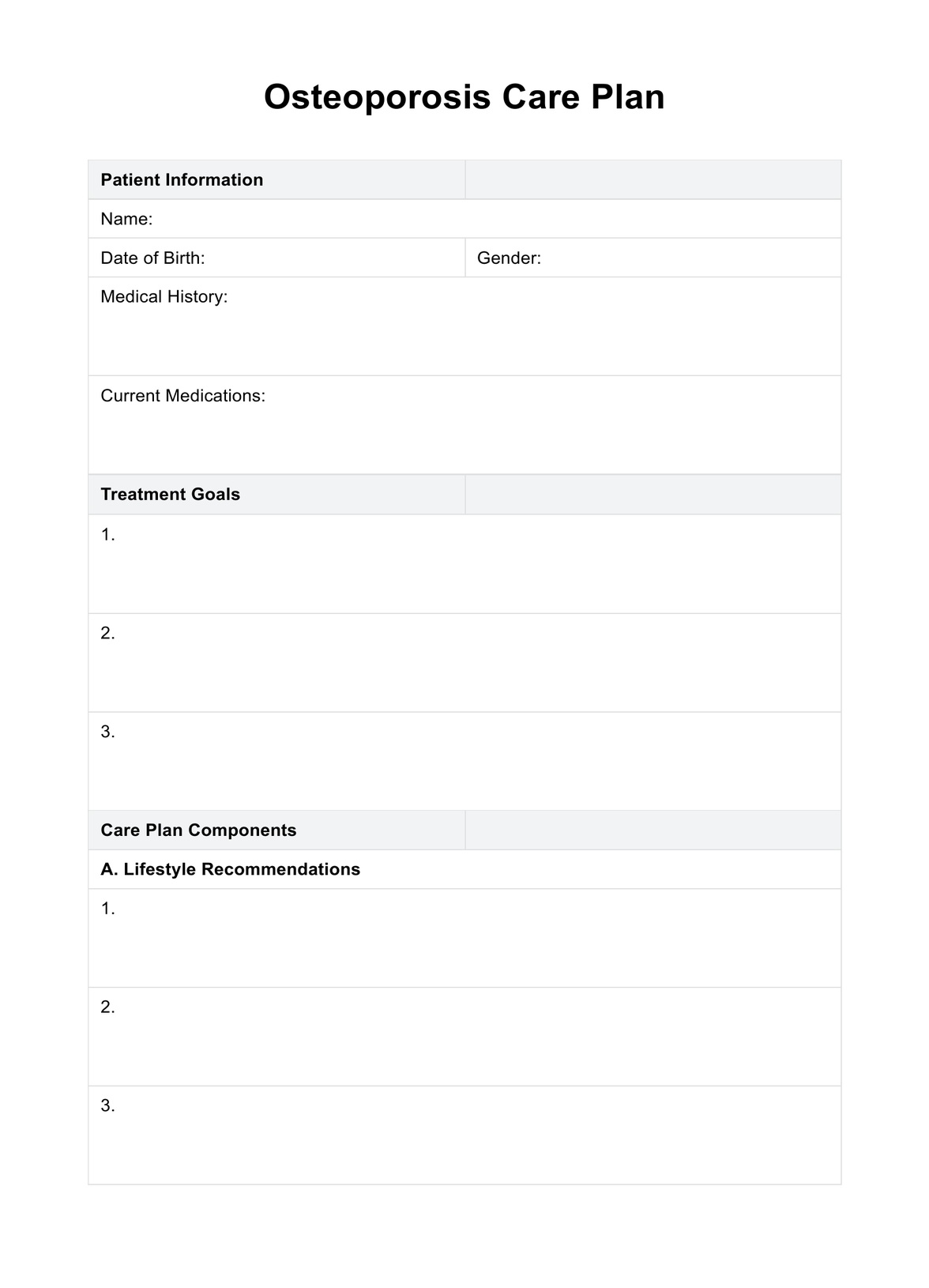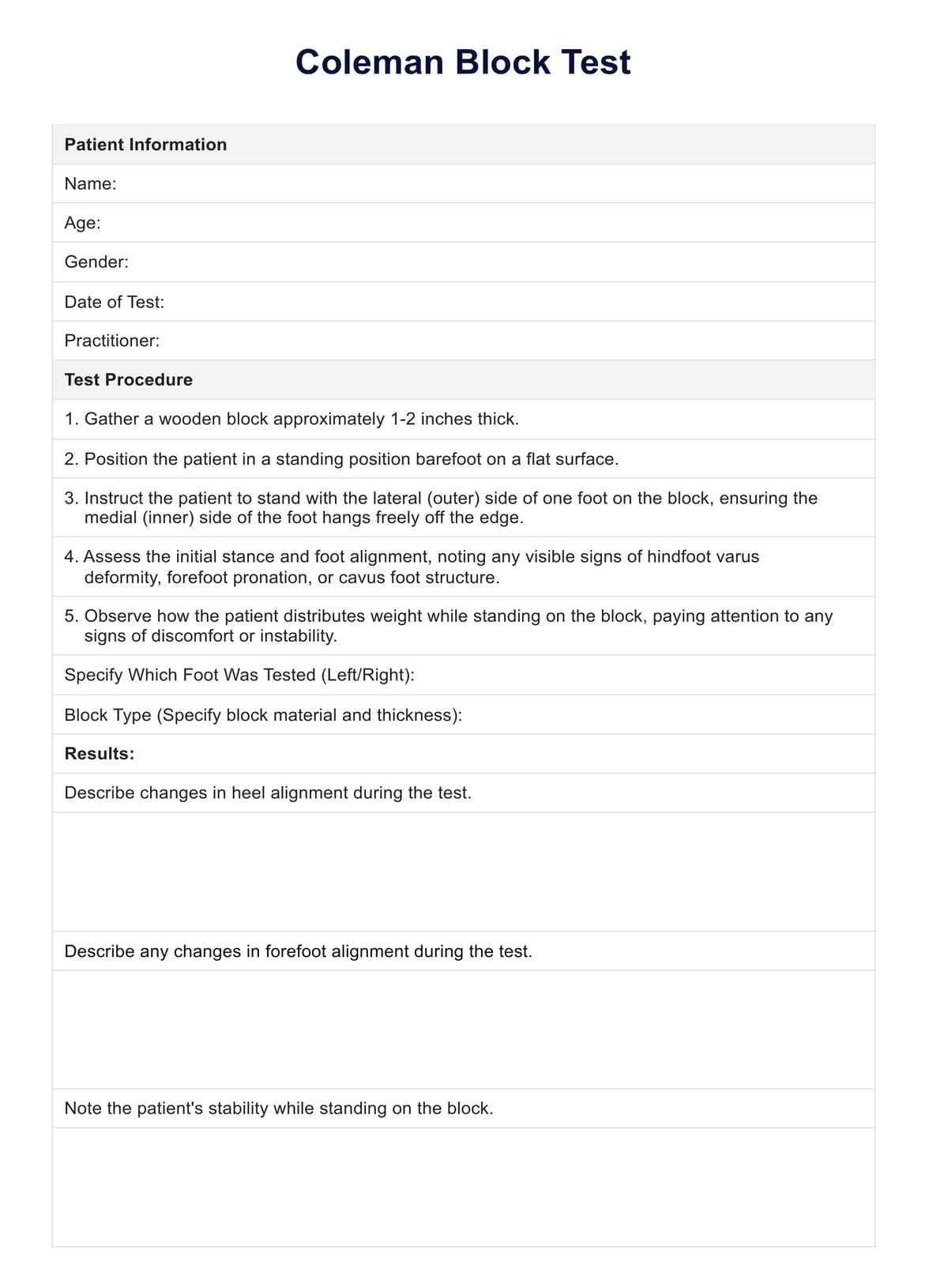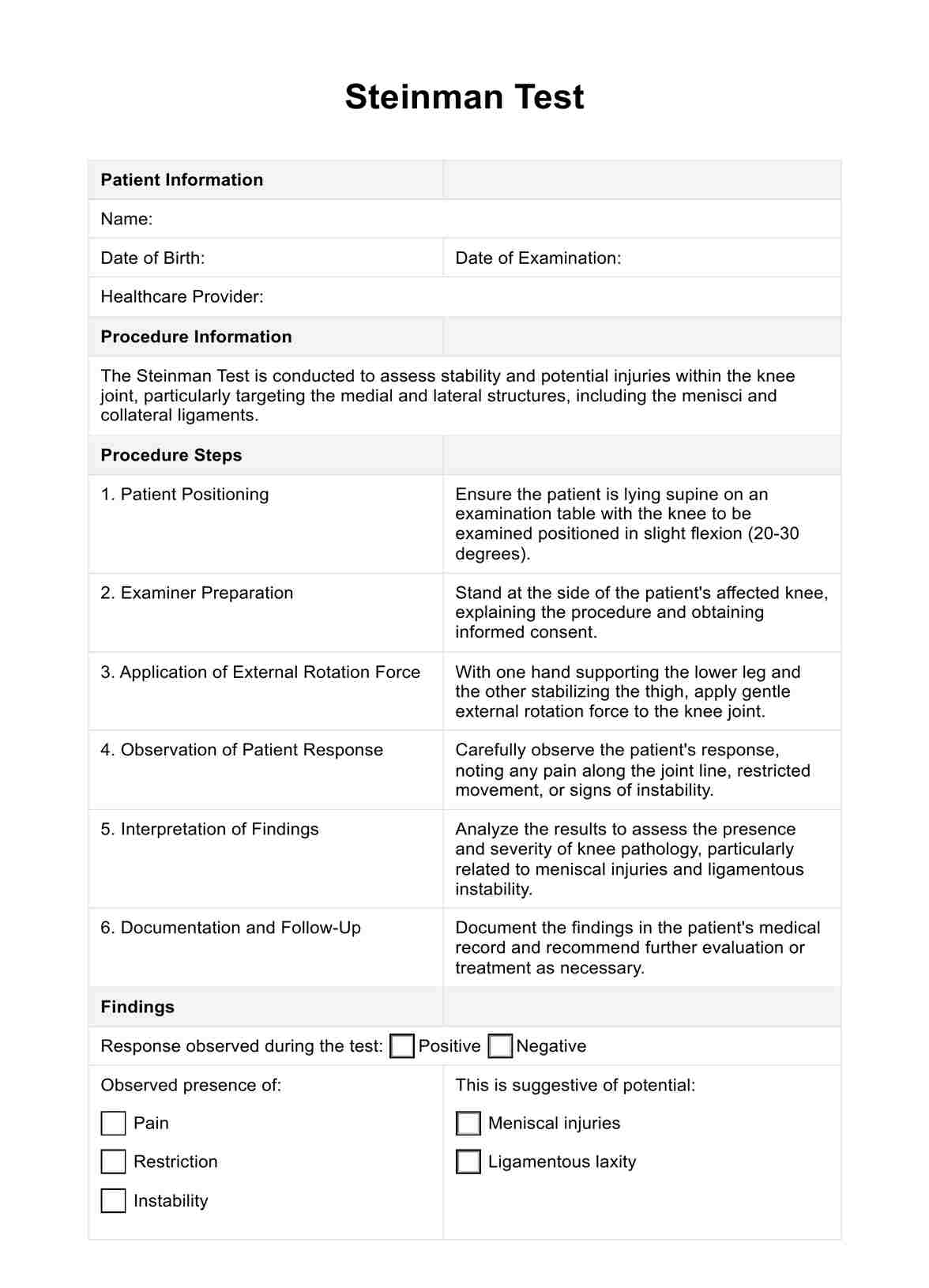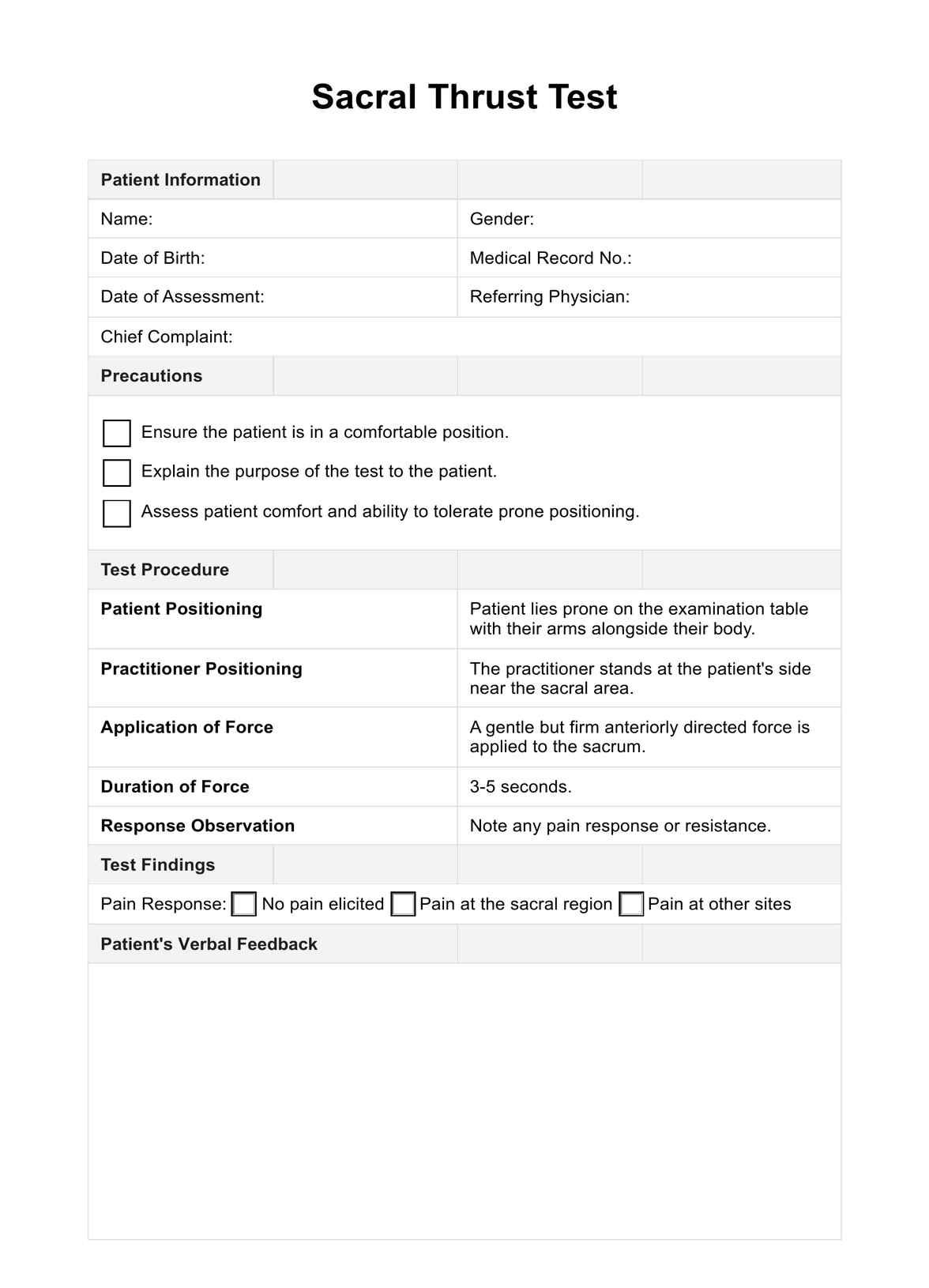Pelvic Girdle Questionnaire
Use our Pelvic Girdle Questionnaire to assess and effectively address issues related to the pelvic girdle.


What is the Pelvic Girdle Questionnaire used for?
The Pelvic Girdle Questionnaire (PGQ) is a condition-specific instrument designed to assess and measure the impact of pelvic girdle pain on individuals. It is used primarily in clinical practice and physical therapy to evaluate activity limitations and monitor patients' progress experiencing pelvic girdle pain. The PGQ provides a comprehensive assessment of the patient's condition with European guidelines, capturing the severity of symptoms and the extent to which the pain affects their daily activities and quality of life.
As an outcome measurement instrument, the Pelvic Girdle Questionnaire is essential for diagnosing the condition and tailoring treatment plans. Its robust measurement properties ensure accurate and reliable results, making it a trusted tool for research and clinical practice among healthcare practitioners in the physical health domain.
The Pelvic Girdle Questionnaire measures and documents the impact of pelvic girdle pain on patients. Its application in clinical practice and physical therapy helps assess activity limitations and optimize treatment plans, making it an invaluable health measurement instrument for managing pelvic girdle conditions.
How reliable is the Pelvic Girdle Questionnaire?
The Pelvic Girdle Questionnaire is highly reliable, as demonstrated by its test-retest reliability. The PGQ activity subscale has an intraclass correlation coefficient (ICC) of 0.93 (95% confidence interval 0.86–0.96), while the symptom subscale has an ICC of 0.91 (95% confidence interval 0.84–0.95) (Stuge et al., 2011).
These high ICC estimates indicate strong consistency and stability in the questionnaire’s results over repeated administrations. This reliability makes the PGQ a trustworthy tool for assessing pelvic girdle pain, ensuring accurate and consistent measurement properties of activity limitations and symptoms in clinical practice.
Pelvic Girdle Questionnaire Template
Pelvic Girdle Questionnaire Example
How to score the Pelvic Girdle Questionnaire
Scoring the Pelvic Girdle Questionnaire involves evaluating two primary domains: activity limitations and symptoms. The PGQ includes 20 items for activity limitations and 5 items for symptoms. These are each scored on a 4-point descriptive scale from 0 to 3. To calculate the total PGQ score, you first sum the scores of all items. The maximum possible score is 75, with 60 points for activity limitations and 15 points for symptoms.
Once the total score is calculated, it is divided by the maximum possible score of 75 and then converted to a percentage. This results in a score ranging from 0% (indicating no disability) to 100% (indicating severe disability rating index). If a respondent selects "not applicable" for any item, 3 points are deducted from the total possible score to ensure accurate calculation. This scoring method provides a clear, standardized way to assess the severity of pelvic girdle pain and its impact on daily activities and symptoms.
How do you assess pelvic girdle pain?
Assessing pelvic girdle pain involves a series of specific tests that help diagnose dysfunction in the sacroiliac joint (SIJ) region. Using a multiple-test score approach is recommended for greater accuracy. Here are some ways to assess the pelvic girdle aside from the PGQ:
- Posterior Pelvic Pain Provocation (P4) test: This test involves applying pressure to the posterior pelvic region to provoke pain. The patient lies supine, and the examiner applies gentle but firm pressure over the sacroiliac joints.
- Long dorsal sacroiliac ligament test: The examiner palpates the long dorsal sacroiliac ligament while the patient is standing or lying down. Pain elicited during palpation indicates a positive test.
- Patrick's (FABER) test: The patient lies supine, and the examiner moves the hip into flexion, abduction, and external rotation (forming a figure-four position). Pain in the sacroiliac region during this maneuver suggests pelvic girdle pain.
- Distraction test: The patient lies supine while the examiner applies lateral pressure to the anterior superior iliac spines. This test aims to stretch the anterior sacroiliac ligaments, and pain elicited indicates a positive result.
Treatment options
When the Pelvic Girdle Questionnaire shows a positive result, indicating significant pelvic girdle pain, several treatment options can help manage and alleviate symptoms. These treatments are based on the measuring properties of health-related quality criteria and the results from condition-specific instruments. Here are some effective options:
Physical therapy
Physical therapy is a primary treatment option for pelvic girdle pain. Consulted physical therapists can create a tailored exercise program to strengthen the pelvic and core muscles, improve flexibility, and alleviate pain. This approach often includes specific exercises derived from low back pain questionnaires, health status questionnaires, and condition-specific instruments to target the root of the discomfort.
Manual therapy
Manual therapy involves hands-on techniques to relieve pain and restore function. Techniques such as joint mobilization and soft tissue manipulation can help reduce pelvic girdle pain. Such can also be used with low back pain questionnaires. This treatment approach is informed by health status measurement instruments and statistical analysis of symptom subscales from the PGQ.
Medication
Over-the-counter or prescribed medications, such as nonsteroidal anti-inflammatory drugs (NSAIDs), can help manage pelvic girdle pain. Medications can be an effective short-term solution for pain relief, but they should be used in conjunction with other treatments for comprehensive care. It should also improve health and quality of life outcomes.
Supportive devices
Supportive devices like pelvic belts or braces can support the pelvic girdle and reduce pain. These devices are designed based on a condition-specific measure developed in the pelvic region. There are health measurement instruments medical professionals can use for support.
Lifestyle and ergonomic adjustments
Making lifestyle and ergonomic adjustments can significantly impact pain management. This may include modifying activities that exacerbate pain, using proper body mechanics, and incorporating ergonomic principles in daily routines.
Reference
Stuge, B., Garratt, A., Krogstad Jenssen, H., & Grotle, M. (2011). The Pelvic Girdle Questionnaire: A condition-specific instrument for assessing activity limitations and symptoms in people with pelvic girdle pain. Physical Therapy, 91(7), 1096–1108. https://doi.org/10.2522/ptj.20100357
Commonly asked questions
The Pelvic Girdle Questionnaire (PGQ) assesses the impact of pelvic girdle pain on an individual’s daily life and activities. It helps evaluate the severity of symptoms and activity limitations, aiding in both diagnosis and treatment planning.
To score the Pelvic Girdle Questionnaire (PGQ), sum the scores of all items and divide by the maximum possible score of 75, then convert this to a percentage. This percentage reflects the degree of disability, with 0% indicating no disability and 100% indicating severe disability.
Pelvic girdle pain assessment involves using specific clinical tests such as the Posterior Pelvic Pain Provocation (P4) and Distraction Test. These tests help identify pelvic girdle pain by reproducing symptoms and evaluating pain in the sacroiliac joint region.
The Pelvic Girdle Questionnaire (PGQ) demonstrates high reliability, with intraclass correlation coefficients of 0.93 for the activity subscale and 0.91 for the PGQ symptom subscale. These high scores indicate strong consistency and accuracy in measuring pelvic girdle pain.



